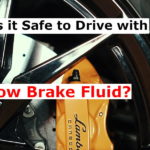Quattro vs. 4Motion: What’s Better? (Comparison)
If you’re in the market for a new all-wheel-drive car, you probably would have heard of both Quattro and 4Motion. But what’s the difference? And which one is better? In this post, I will compare these two technologies and help you decide which one is right for you!
What are Quattro and 4 Motion?
So, first, let’s understand each system in detail and find out which brands use each of these systems.
Quattro: An Overview
Quattro is an Italian word meaning four. Quattro is the name used for an all-wheel-drive system that was developed by Audi. It was first developed by Audi in 1980. It is a permanent all-wheel-drive system that initially used a center differential to distribute power evenly between the front and rear wheels.
However, the system has evolved over the years and Audi’s Quattro drive is available in a variety of configurations for each vehicle. The main principle is yet the same, transferring power to all four wheels when needed.
For longitudinally installed engines, Quattro configuration varies. You get an original Quattro drive featuring a self-locking center differential in the Tiptronic automatic gearbox. While in Audis with a manual gearbox or S-Tronic, you can switch between front-wheel drive and all-wheel drive as needed. For transverse engines, Audi has developed its unique powertrain featuring a hydraulic multi-plate clutch.
Another milestone that Audi has achieved is the introduction of electric four-wheel drive in the Audi E-Tron. This has taken Quatro to a whole new level by enabling 4-wheel drive on a vehicle powered by three electric motors.
Also read: Are Audis Expensive to Maintain? Here are the Facts
4Motion: An Overview
Just like Quattro, 4Motion is the name of Volkswagen’s all-wheel-drive (AWD). A 4MOTION system uses hardware and software configurations that are tailored to each vehicle and its intended use.
4Motion comes in various AWD setups, with the Touareg’s ‘Torsen’-type arrangement, the Amarok’s Torsen-type set up with a transfer case and the Haldex arrangement in Golf’s. Haldex is more common in Volkswagen’s AWD vehicles.
Sensors in the Volkswagen 4MOTION system assess road conditions, driving habits, and wheel slippage. It automatically changes the amount of power given to the wheel that requires it if there are any anomalies, so that the driver may maintain control of the vehicle at all times.
The 4Motion utilizes an “on-demand” approach rather than permanent engagement. The “on-demand” nature means power is given to the appropriate wheel or wheels only when needed, maximum grip and stability are ensured while fuel consumption is reduced.
All the shifting takes place so quickly that one even doesn’t realize when the power was shifted from front wheels to all-wheels.
Haldex and Torsen
Torsen and Haldex are two types of all-wheel drive transmission systems used by cars in Volkswagen Group, (VW and Audi). You will find both systems in Quadro and 4Motion. But Torsen is more common in Audi, whereas Haldex is mostly found in 4Motion cars.
Keep in mind that both these systems are not installed based on Quattro or 4Motion, but based on the positioning of the engine. If you have the engine positioned sideways (transverse), you will find a Haldex system there. While if the engine is positioned longitudinally, you will find a Torsen system.
A Comparison of Quattro and 4 Motion
I hope you have got an idea, how of each of these systems works, so let’s compare these in terms of their power transmission, mileage, and types of systems they use.
Torsen System/ Quattro IV
Quattro is installed in Audi cars, which have engines in a longitudinal position. Hence, Torsen-style transmission is commonly observed there.
In the Torsen system, the power is sent to a central differential which distributes its evenly among the two axles in normal circumstances. So, it means the car is in all-wheel-drive mode all the time. That’s why it is a permanently engaged all-wheel-drive system.
Haldex System (4 Motion)
All Volkswagen 4Motion cars use the Haldex system except Touareg and Amarok. In the Haldex system, the power is sent to the front axle in normal conditions. But as the sensor realizes a loss of traction, they shift half of the power to the rear wheel in a fraction of a second.
VW also calls this a permanent 4-wheel drive system, in the sense that it automatically engages when it realizes the car is in difficult terrain. However, the system is not always engaged when you drive on smooth roads.
Also read: Are Volkswagens Reliable? (and Models to Avoid)
Power Transmission in Both Systems
In the case of 4Motion, which mostly has a Haldex system, the power normally goes to front drives, with a multi-plate clutch. Which then transfers it to the rear wheels, in incase the front tires slip.
While in the case of Quattro (Torsen), the power goes to a central differential, which distributes it evenly among the front and rear wheels.
Power Distribution to Front and Back Wheels
For the case of Haldex, 90% of power stays with the front axles. But in case, when the sensors sense loss of traction, power is divided equally to the rear axle.
In the case of Torsen, the power is sent to a centrally locked differential, which divides it equally (50% each) among the two axles.
Mileage
The mileage also varies in both systems. In a VW car, featuring Haldex-style transmission, the power is only with the front two wheels, so its fuel consumption is way less compared to an Audi car with Torsen. Because, in Torsen, the engine constantly sends power to all wheels.
You get better mileage in 4Motion compared to Quattro.
Which One is Better? Quattro or 4Motion
Both the Quattro and 4Motion share many similarities since they come from the same parent company. However, one is more titled towards Torsen while the other has the Haldex system. Which one is better depends on your use case?
If you want a car for driving normally on roads or occasionally snowy roads, 4Motion (Haldex) systems are fine. Because they don’t engage the all wheels unless required. However, for off-roading, towing, and driving on the snowy roads often, the Quattro system (Torsen) is great to drive with. Secondly, the Haldex systems are quite dependent on electronics (sensors); if any of the sensors fails, the system won’t engage the AWD option.
If you were to ask me, I would suggest Quattro AWD since it is completely an All-wheel drive system, which is permanently engaged all the time. Though it has some drawbacks, it gives you an exciting off-road drive.
Top 5 Cars with Quattro & 4 Motion
Now, let me give you some names of cars that utilize Quattro and 4Motion. The famous Audis with Quattro are:
- Audi A3, A4, A5, A6
- Audi RS3, RS5
- Audi E-Tron
- Audi SQ5
- Audi R8
The Volkswagen cars with 4Motion are:
When Should You Buy a 4-wheel Drive Car?
It is not always a good decision to buy 4-wheel drive cars. I would suggest you buy an AWD car if you really need it. For instance, you can consider buying it if you reside in an area prone to inclement weather and slick roads, this is a need. If you pull a caravan or a large trailer regularly, this is an excellent option for you.
If none of these factors apply to you, I recommend a front-wheel-drive vehicle because it is less expensive to acquire and maintain.
Sources
- Volkswagen: 4MotionExplained
- Audi: The legend Quattro celebrates its 40th anniversary
- Car Throttle: Haldex VS Torsen: Which do I Have, and Does it Really Matter?
- Green Audi: What is Audi Quattro
- CarWow: What is VW4Motion?
- Auto daily: What is VW4 and do you really need it?






